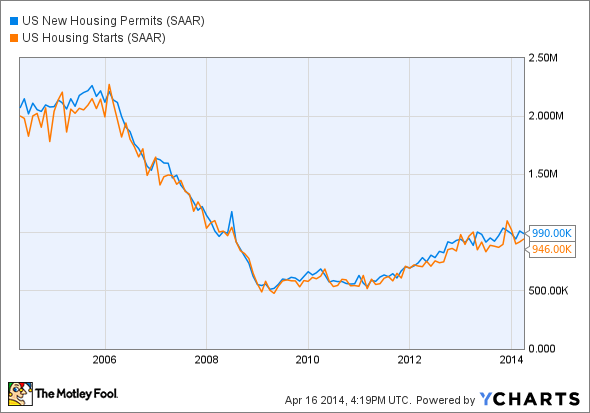As of October 13, the small-cap Russell 2000 Index was down 12.9% from its 2014 high on July 3—a double-digit correction not seen in more than three years. With the U.S. economy slowly improving and Fed tapering winding down as scheduled, what is driving this pullback? Co-Chief Investment Officer Francis Gannon talks about economic growth beyond our borders and how it has been playing a role in shifting investor sentiment.
Investors can be forgiven if they felt like Halloween arrived a little early this year.
Volatility has returned to the equity markets with a vengeance of late. Investors fear that the pronounced economic malaise that currently holds Europe and Asia in its grasp may spread to the U.S. As of October 13, the small-cap Russell 2000 Index was down 12.9% from its 2014 high on July 3.
While there have been a number of mild pullbacks in recent years, the small-cap market had not seen a double-digit correction for more than three years prior to this most recent decline. Interestingly, the third quarter of 2014 also saw the first negative quarter for the small-cap index in the last nine.
A closer look at the correction-to-date and the just-completed third quarter reveals some compelling developments that began with a down month in July in which the Russell 2000 lost 6.1%. Federal Reserve Chair Janet Yellen's comments about "stretched" valuations within small-cap, specifically biotech and the social media end of technology, made an already anxious small-cap market even more uneasy.
Most of our Featured Funds were also down during the month, though most outperformed their respective benchmarks. In August, the Russell 2000 rebounded with a 5.0% gain, and in this strong positive month most of these same portfolios trailed their benchmarks—again, as we would typically expect.
September, however, was an unusual month that dispensed with history's more familiar script. The pace of global economic growth was questioned while here in the U.S. Fed tapering continued to wind down.
What, then, made September, and ultimately the third quarter, so unusual and far more of a trick than a treat for most equity investors?
It was not the 6.1% decline for the Russell 2000 in September. September was unusual because it did not matter where you were on the quality spectrum, which often provides down market protection. What mattered in this unpredictable period was one's sector exposure.
Our sector exposure varies, but for the most part our Featured Fund portfolios have been overweight most recently in economically sensitive sectors, including Consumer Discretionary, Energy, Industrials, Information Technology, and Materials, and underweight in more defensive areas such as Health Care and Utilities.
During September, mounting concerns about the slowing pace of global growth disproportionally hit economically sensitive areas of the market, resulting in steep net losses within the Russell 2000 for Consumer Discretionary (-5.3%), Energy (-15.4%), Industrials (-7.4%), and Materials (-8.6%).
Two unwanted tricks were handed out with these declines: First, the sell-offs have tended to be highly indiscriminate, taking little account of small-cap companies with the kind of strong fundamentals that we seek, such as strong balance sheets, positive cash flows, and high returns on invested capital.
Second, the violent swings of high volatility have lasted well into October. As of October 23, the Halloween month was positive for small-caps but negative for most large-cap indexes as well as most non-U.S. indexes, regardless of cap size. Corrections are of course a normal part of the equity landscape. From our perspective, the market dislocations of September and October seem to be driven, at least for the moment, by a clear sentiment shift in global growth expectations.
We have always thought that having a long-term investment horizon is of paramount importance. This is especially true in a transitional phase from Fed-driven liquidity to a more exclusively growth-driven market.
Uncertainty might abound right now to the point where many investors may feel like they're lost in a haunted house, but our approach remains consistent and we have stayed calm.
The indiscriminate selling has allowed us to re-enter some of our favorite names at absolute valuations with which we are very comfortable. And finding what we think are excellent businesses at attractively discounted prices is our favorite kind of treat—at Halloween or any other time of year.
Important Performance and Expense Information
All performance information reflects past performance, is presented on a total return basis, reflects the reinvestment of distributions, and does not reflect the deduction of taxes that a shareholder would pay on fund distributions or the redemption of fund shares. Past performance is no guarantee of future results. Investment return and principal value of an investment will fluctuate, so that shares may be worth more or less than their original cost when redeemed. Shares redeemed within 180 days of purchase may be subject to a 1% redemption fee payable to the Fund (2% for Royce Global Value and International Smaller-Companies Funds). Redemption fees are not reflected in the performance shown above; if they were, performance would be lower. Current month-end performance may be higher or lower than performance quoted and may be obtained here. All performance and expense information reflects results of the Fund's oldest share Class (Investment Class or Service Class, as the case may be). Gross operating expenses reflect each Fund's gross total annual operating expenses, including management fees, any 12b-1 distribution and service fees, other expenses, and any applicable acquired fund fees and expenses. Net operating expenses reflect contractual fee waivers and/or expense reimbursements. All expense information is reported as of the Fund's most current prospectus. Royce & Associates has contractually agreed to waive fees and/or reimburse operating expenses through April 30, 2015 to the extent necessary to maintain net annual operating expenses, (excluding brokerage commissions, taxes, interest, litigation expenses, acquired fund fees and expenses, and other expenses not borne in the ordinary course of business), to no more than 1.24% for the Service Class of Royce Special Equity Multi-Cap Fund, to no more than 1.49% for the Service Class of Royce Low-Priced Stock Fund, and to no more than 1.69% for the Service Class of Royce International Smaller-Companies Fund. Royce & Associates has cont! ractually agreed to waive fees and/or reimburse operating expenses through April 30, 2024 to the extent necessary to maintain net annual operating expenses (excluding brokerage commissions, taxes, interest, litigation expenses, acquired fund fees and expenses, and other expenses not borne in the ordinary course of business) to no more than 1.99% for the Service Class of Royce International Smaller-Companies Fund. Acquired fund fees and expenses reflect the estimated amount of the fees and expenses incurred indirectly by any applicable Fund through its investments in mutual funds, hedge funds, private equity funds, and other investment companies. Shares of a Fund's Service, Consultant, R, and K Classes bear an annual distribution expense that is not borne by the Fund's Investment Class. The Royce Funds, other than Royce Special Equity Multi-Cap Fund, invest primarily in securities of micro-cap, small-cap, and/or mid-cap companies, which may involve considerably more risk than investments in securities of larger-cap companies (see "Primary Risks for Fund Investors" in the respective prospectus).
Important Disclosure Information
Francis Gannon is a Co-Chief Investment Officer and Managing Director of Royce & Associates. His thoughts in this piece concerning the stock market are solely his own and, of course, there can be no assurance with regard to future market movements. No assurance can be given that the past performance trends as outlined above will continue in the future.
Russell Investment Group is the source and owner of the trademarks, service marks, and copyrights related to the Russell Indexes. Russell© is a trademark of Russell Investment Group. The Russell 2000 Index is an index of domestic small-cap stocks that measures the performance of the 2,000 smallest publicly traded U.S. companies in the Russell 3000 Index. The performance of an index does not represent exactly any particular investment, as you cannot invest directly in an index.
Also check out: Chuck Royce Undervalued Stocks Chuck Royce Top Growth Companies Chuck Royce High Yield stocks, and Stocks that Chuck Royce keeps buying| Currently 0.00/512345 Rating: 0.0/5 (0 votes) |
More GuruFocus Links
| Latest Guru Picks | Value Strategies |
| Warren Buffett Portfolio | Ben Graham Net-Net |
| Real Time Picks | Buffett-Munger Screener |
| Aggregated Portfolio | Undervalued Predictable |
| ETFs, Options | Low P/S Companies |
| Insider Trends | 10-Year Financials |
| 52-Week Lows | Interactive Charts |
| Model Portfolios | DCF Calculator |
RSS Feed  | Monthly Newsletters |
| The All-In-One Screener | Portfolio Tracking Tool |
 MORE GURUFOCUS LINKS
MORE GURUFOCUS LINKS | Latest Guru Picks | Value Strategies |
| Warren Buffett Portfolio | Ben Graham Net-Net |
| Real Time Picks | Buffett-Munger Screener |
| Aggregated Portfolio | Undervalued Predictable |
| ETFs, Options | Low P/S Companies |
| Insider Trends | 10-Year Financials |
| 52-Week Lows | Interactive Charts |
| Model Portfolios | DCF Calculator |
RSS Feed  | Monthly Newsletters |
| The All-In-One Screener | Portfolio Tracking Tool |
 201.66 (1y: +14%) $(function(){var seriesOptions=[],yAxisOptions=[],name='SPY',display='';Highcharts.setOptions({global:{useUTC:true}});var d=new Date();$current_day=d.getDay();if($current_day==5||$current_day==0||$current_day==6){day=4;}else{day=7;} seriesOptions[0]={id:name,animation:false,color:'#4572A7',lineWidth:1,name:name.toUpperCase()+' stock price',threshold:null,data:[[1383282000000,176.21],[1383544800000,176.83],[1383631200000,176.27],[1383717600000,177.17],[1383804000000,174.93],[1383890400000,177.29],[1384149600000,177.32],[1384236000000,176.96],[1384322400000,178.38],[1384408800000,179.27],[1384495200000,180.05],[1384754400000,179.42],[1384840800000,179.03],[1384927200000,178.47],[1385013600000,179.91],[1385100000000,180.81],[1385359200000,180.63],[1385445600000,180.68],[1385532000000,181.12],[1385618400000,181.12],[1385704800000,181],[1385964000000,180.53],[1386050400000,179.75],[1386136800000,179.73],[1386223200000,178.94],[1386309600000,180.94],[1386568800000,181.4],[1386655200000,180.75],[1386741600000,178.72],[1386828000000,178.13],[1386914400000,178.11],[1387173600000,179.22],[1387260000000,178.65],[1387346400000,181.7],[1387432800000,181.49],[1387519200000,181.56],[1387778400000,182.53],[1387864800000,182.93],[1387951200000,182.93],[1388037600000,183.86],[1388124000000,183.85],[1388383200000,183.82],[1388469600000,184.69],[1388556000000,184.69],[1388642400000,182.92],[1388728800000,182.89],[1388988000000,182.36],[1389074400000,183.48],[1389160800000,183.52],[1389247200000,183.64],[1389333600000,184.14],[1389592800000,181.69],[1389679200000,183.67],[1389765600000,184.66],[1389852000000,184.42],[1389938400000,183.64],[1390197600000,183.64],[1390284000000,184.18],[1390370400000,184.3],[1390456800000,182.79],[1390543200000,178.89],[1390802400000,178.01],[1390888800000,179.07],[1390975200000,177.35],[1391061600000,179.23],[1391148000000,178.18],[1391407200000,174.17],[1391493600000,175.39],[1391580000000,175.17],[1391666400000,177.48],[1391752800000,179.68],[1392012000000,180.01],[1392098400000,181.98],[1392184800000,182.07],[1392271200000,183.01],[1392357600000,184.02],[1392616800000,184.02],[1392703200000,184.24],[1392789600000,183.02],[1392876000000,184.1],[1392962400000,183.89],[1393221600000,184.91],[1393308000000,184.84],[139339! 4400000,184.85],[1393480800000,185.82],[1393567200000,186.29],[1393826400000,184.98],[1393912800000,187.58],[139399920000
201.66 (1y: +14%) $(function(){var seriesOptions=[],yAxisOptions=[],name='SPY',display='';Highcharts.setOptions({global:{useUTC:true}});var d=new Date();$current_day=d.getDay();if($current_day==5||$current_day==0||$current_day==6){day=4;}else{day=7;} seriesOptions[0]={id:name,animation:false,color:'#4572A7',lineWidth:1,name:name.toUpperCase()+' stock price',threshold:null,data:[[1383282000000,176.21],[1383544800000,176.83],[1383631200000,176.27],[1383717600000,177.17],[1383804000000,174.93],[1383890400000,177.29],[1384149600000,177.32],[1384236000000,176.96],[1384322400000,178.38],[1384408800000,179.27],[1384495200000,180.05],[1384754400000,179.42],[1384840800000,179.03],[1384927200000,178.47],[1385013600000,179.91],[1385100000000,180.81],[1385359200000,180.63],[1385445600000,180.68],[1385532000000,181.12],[1385618400000,181.12],[1385704800000,181],[1385964000000,180.53],[1386050400000,179.75],[1386136800000,179.73],[1386223200000,178.94],[1386309600000,180.94],[1386568800000,181.4],[1386655200000,180.75],[1386741600000,178.72],[1386828000000,178.13],[1386914400000,178.11],[1387173600000,179.22],[1387260000000,178.65],[1387346400000,181.7],[1387432800000,181.49],[1387519200000,181.56],[1387778400000,182.53],[1387864800000,182.93],[1387951200000,182.93],[1388037600000,183.86],[1388124000000,183.85],[1388383200000,183.82],[1388469600000,184.69],[1388556000000,184.69],[1388642400000,182.92],[1388728800000,182.89],[1388988000000,182.36],[1389074400000,183.48],[1389160800000,183.52],[1389247200000,183.64],[1389333600000,184.14],[1389592800000,181.69],[1389679200000,183.67],[1389765600000,184.66],[1389852000000,184.42],[1389938400000,183.64],[1390197600000,183.64],[1390284000000,184.18],[1390370400000,184.3],[1390456800000,182.79],[1390543200000,178.89],[1390802400000,178.01],[1390888800000,179.07],[1390975200000,177.35],[1391061600000,179.23],[1391148000000,178.18],[1391407200000,174.17],[1391493600000,175.39],[1391580000000,175.17],[1391666400000,177.48],[1391752800000,179.68],[1392012000000,180.01],[1392098400000,181.98],[1392184800000,182.07],[1392271200000,183.01],[1392357600000,184.02],[1392616800000,184.02],[1392703200000,184.24],[1392789600000,183.02],[1392876000000,184.1],[1392962400000,183.89],[1393221600000,184.91],[1393308000000,184.84],[139339! 4400000,184.85],[1393480800000,185.82],[1393567200000,186.29],[1393826400000,184.98],[1393912800000,187.58],[139399920000

 Popular Posts: 3 Cash Cow Stocks to Buy: Timeshare StocksRent-to-Own Stocks Look CompellingThis No-Name Sector Delivers 15% Growth Recent Posts: 3 Cash Cow Stocks to Buy: Timeshare Stocks This No-Name Sector Delivers 15% Growth PCLN Stock: Priceline Is a Screaming Buy View All Posts
Popular Posts: 3 Cash Cow Stocks to Buy: Timeshare StocksRent-to-Own Stocks Look CompellingThis No-Name Sector Delivers 15% Growth Recent Posts: 3 Cash Cow Stocks to Buy: Timeshare Stocks This No-Name Sector Delivers 15% Growth PCLN Stock: Priceline Is a Screaming Buy View All Posts  Source: Flickr
Source: Flickr  Marriott Vacations Worldwide (VAC) is a great starting point for timeshare stocks. It holds 62 properties made up of 12,829 villas, held by 420,000 customers across the U.S. and nine other countries.
Marriott Vacations Worldwide (VAC) is a great starting point for timeshare stocks. It holds 62 properties made up of 12,829 villas, held by 420,000 customers across the U.S. and nine other countries. Diamond Resorts International (DRII) has an broad property base for a timeshare stock. It boasts 490,000 owners across a network of 300 vacation sites in 33 countries including the U.S., Canada, Mexico, the Caribbean, Central America, South America, Europe, Asia, Australia and Africa.
Diamond Resorts International (DRII) has an broad property base for a timeshare stock. It boasts 490,000 owners across a network of 300 vacation sites in 33 countries including the U.S., Canada, Mexico, the Caribbean, Central America, South America, Europe, Asia, Australia and Africa. Interval Leisure Group (IILG) feels to me like it has been bought and sold many times, probably because it's one of the oldest timeshare stocks, founded in 1976. Its 2,900 resorts are spread across 16 nations, with more than 2 million owners. It also diversifies its revenue stream by selling ownerships, and by managing and renting properties. Virtually ever major hotel chain is partnered with it.
Interval Leisure Group (IILG) feels to me like it has been bought and sold many times, probably because it's one of the oldest timeshare stocks, founded in 1976. Its 2,900 resorts are spread across 16 nations, with more than 2 million owners. It also diversifies its revenue stream by selling ownerships, and by managing and renting properties. Virtually ever major hotel chain is partnered with it. HONG KONG (CNNMoney) Hong Kong's top official has offered a controversial defense of Beijing's plan for elections in the financial capital, telling foreign media that an open nomination process would give the city's poorest residents greater influence over the political system.
HONG KONG (CNNMoney) Hong Kong's top official has offered a controversial defense of Beijing's plan for elections in the financial capital, telling foreign media that an open nomination process would give the city's poorest residents greater influence over the political system.  Meet the man connecting Hong Kong protesters
Meet the man connecting Hong Kong protesters  A depiction of C.Y. Leung at a protest in Hong Kong's businesss district.
A depiction of C.Y. Leung at a protest in Hong Kong's businesss district. 

 Jeff Neumann/CBS via Getty ImagesA scene from CBS's "The Good Wife." NEW YORK -- CBS (CBS) is jumping on the cord-cutting bandwagon, launching a stand-alone digital streaming service for $5.99 a month that will offer subscribers access to its current and older shows. The news comes a day after HBO said it plans to offer a streaming-only service next year. Americans are increasingly turning to digital media to watch TV and movies. About 45 percent of Americans stream television shows at least once a month, according to research firm eMarketer. That number is expected to increase to 53 percent or 175 million people by 2018, it says. "With video consumption habits changing all the time, it is very important that we continue to provide the best local news, entertainment and sports via a service like CBS All Access," said Peter Dunn, president of CBS Television Stations, in a statement. "Television stations have been the fabric of local broadcasting for 75 years, and today's announcement is part of paving the way for the next 75." The broadcast TV network says 15 current prime-time shows such as "The Good Wife" and "Survivor" will be available the day after they air on the service, called CBS All Access. Subscriptions to the service will include the ability to stream CBS stations live in 14 markets and watch previous seasons of current shows as well as older shows from both CBS and other networks like "Twin Peaks" and "Cheers." But live-streaming of sporting events, including NFL coverage, isn't available. Other monthly streaming services, Hulu and Netflix (NFLX), currently offer some CBS shows for streaming, but the CBS All Access service offers a more complete catalog.
Jeff Neumann/CBS via Getty ImagesA scene from CBS's "The Good Wife." NEW YORK -- CBS (CBS) is jumping on the cord-cutting bandwagon, launching a stand-alone digital streaming service for $5.99 a month that will offer subscribers access to its current and older shows. The news comes a day after HBO said it plans to offer a streaming-only service next year. Americans are increasingly turning to digital media to watch TV and movies. About 45 percent of Americans stream television shows at least once a month, according to research firm eMarketer. That number is expected to increase to 53 percent or 175 million people by 2018, it says. "With video consumption habits changing all the time, it is very important that we continue to provide the best local news, entertainment and sports via a service like CBS All Access," said Peter Dunn, president of CBS Television Stations, in a statement. "Television stations have been the fabric of local broadcasting for 75 years, and today's announcement is part of paving the way for the next 75." The broadcast TV network says 15 current prime-time shows such as "The Good Wife" and "Survivor" will be available the day after they air on the service, called CBS All Access. Subscriptions to the service will include the ability to stream CBS stations live in 14 markets and watch previous seasons of current shows as well as older shows from both CBS and other networks like "Twin Peaks" and "Cheers." But live-streaming of sporting events, including NFL coverage, isn't available. Other monthly streaming services, Hulu and Netflix (NFLX), currently offer some CBS shows for streaming, but the CBS All Access service offers a more complete catalog. Monkey Business Images/Shutterstock More than 43 percent of Americans get health insurance through a current or former employer. For most of them, the open enrollment period -- the one time each year that they can change insurance coverage for the following year -- is approaching. Here are three things to keep in mind. 1. Your Employer Probably Changed Your Choices According to the National Business Group on Health, employers expect a 6.5 percent increase in health care benefit costs in 2015, and to reduce those cost increases, they're looking at ideas like consumer-driven health plans to help give workers more incentive to control their own health care costs. In addition, private health-insurance exchanges are becoming more popular, and some companies are changing pharmacy benefits and other specialty areas. Most employers offer extensive education when they make big plan changes, understanding that most people will be reluctant to change the coverage they already have. By taking advantage of that education, you can not only learn more about the reasoning behind any changes but also better understand whether you can reap some financial benefits from using the new plan options. At the same time, you can also make sure that benefits you were counting on for the future aren't going away -- and if they are, you still have a couple of months in 2014 to try to take advantage of existing provisions in this year's coverage. 2. Think Seriously About the Nature of Your Health Care Needs Typically, you can choose different levels of coverage. One choice might offer extensive coverage of nearly every conceivable health care expense -- with high-ticket monthly premiums. Another might save you on upfront premiums but require larger copays, higher deductibles and more out-of-pocket costs. Obviously, you can't always anticipate a major health care expense a year in advance, but looking at your past health experience can help guide you. Healthy individuals often do better choosing low-cost plans that require them to pay more of their costs if problems do crop up. Those who expect greater use of medical services often end up doing better with more comprehensive plans, but again, it's worth it to take a look at your policy for the direct answers. 3. Sometimes, You Can Make Changes at Other Times The open enrollment period is so important because most of the time you can't change coverage in the middle of a year. But there are some exceptions during "special open enrollment periods." Most of the qualifying events involve changes in family status, with marriage, divorce, domestic partnership or the birth of a child being the most common instances in which you'll have an opportunity or obligation to change coverage. In addition, if you have coverage through multiple employers, a change in coverage under one employer might trigger the ability to make changes with others. Similarly, becoming eligible for other benefits such as Medicare and Medicaid allows changes outside the usual open enrollment period. More from Dan Caplinger
Monkey Business Images/Shutterstock More than 43 percent of Americans get health insurance through a current or former employer. For most of them, the open enrollment period -- the one time each year that they can change insurance coverage for the following year -- is approaching. Here are three things to keep in mind. 1. Your Employer Probably Changed Your Choices According to the National Business Group on Health, employers expect a 6.5 percent increase in health care benefit costs in 2015, and to reduce those cost increases, they're looking at ideas like consumer-driven health plans to help give workers more incentive to control their own health care costs. In addition, private health-insurance exchanges are becoming more popular, and some companies are changing pharmacy benefits and other specialty areas. Most employers offer extensive education when they make big plan changes, understanding that most people will be reluctant to change the coverage they already have. By taking advantage of that education, you can not only learn more about the reasoning behind any changes but also better understand whether you can reap some financial benefits from using the new plan options. At the same time, you can also make sure that benefits you were counting on for the future aren't going away -- and if they are, you still have a couple of months in 2014 to try to take advantage of existing provisions in this year's coverage. 2. Think Seriously About the Nature of Your Health Care Needs Typically, you can choose different levels of coverage. One choice might offer extensive coverage of nearly every conceivable health care expense -- with high-ticket monthly premiums. Another might save you on upfront premiums but require larger copays, higher deductibles and more out-of-pocket costs. Obviously, you can't always anticipate a major health care expense a year in advance, but looking at your past health experience can help guide you. Healthy individuals often do better choosing low-cost plans that require them to pay more of their costs if problems do crop up. Those who expect greater use of medical services often end up doing better with more comprehensive plans, but again, it's worth it to take a look at your policy for the direct answers. 3. Sometimes, You Can Make Changes at Other Times The open enrollment period is so important because most of the time you can't change coverage in the middle of a year. But there are some exceptions during "special open enrollment periods." Most of the qualifying events involve changes in family status, with marriage, divorce, domestic partnership or the birth of a child being the most common instances in which you'll have an opportunity or obligation to change coverage. In addition, if you have coverage through multiple employers, a change in coverage under one employer might trigger the ability to make changes with others. Similarly, becoming eligible for other benefits such as Medicare and Medicaid allows changes outside the usual open enrollment period. More from Dan Caplinger